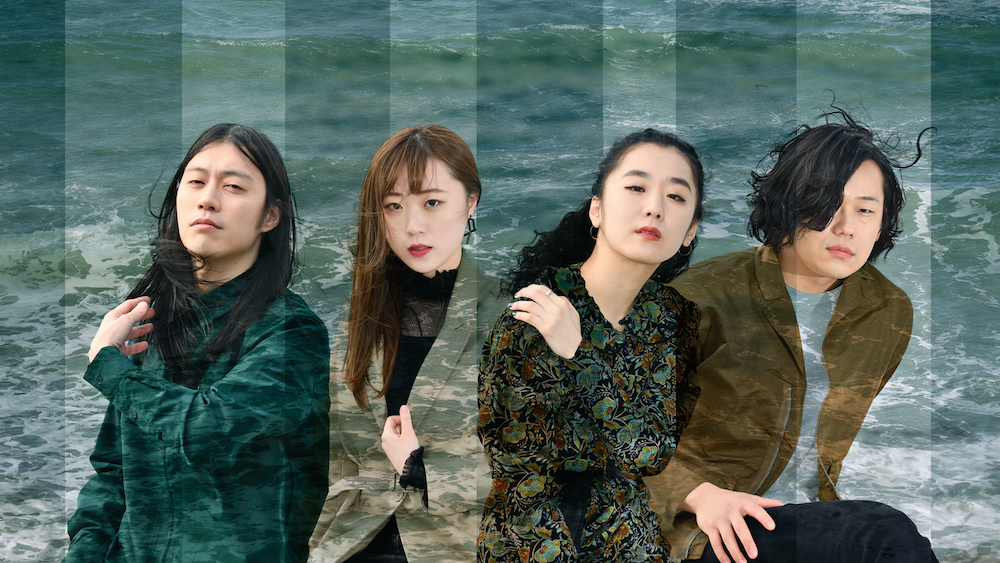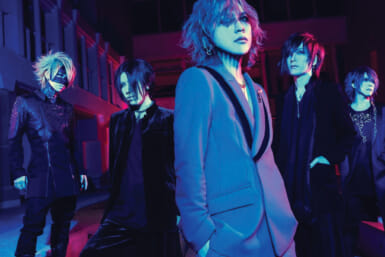Aside from the highlights below, Mnst’s (the duo of Soichi Terada and Manabu Nagayama) collaborative EP with Kero Kero Bonito’s Sarah Bonito Nijiiro Waaludo shows how much one can mess with and reshape a single track in this age of endless remixes. For those who like their rock all-guns-blazing, I can’t think of anything more suitable than Buck-Tick’s Abracadabra. Meanwhile, the appeal of Stones Taro’s BAM002 EP might be a bit fine-tuned to my background (a Japanese artist’s exploration of UK clubland) but it nevertheless makes for enticing listening.
1. Penguinrush, ‘All of Them are Sky Blue’
(JVCKENWOOD Victor)
Penguinrush hail from a long, strong line of Japanese artists that have fused jazz music with easy-listening pop. Though Japanese ‘jazz-pop’ has roots dating back to the Showa Era, its modern incarnation often owes as much to the boundless fusion of city pop in the wake of bossa nova and the Brazilian ‘50s and ‘60s.
While the genre can often be somewhat sedate; music famed for just the right balance of atmospheric pleasantry and instrumental virtuosity, Penguinrush make jazz-pop with J-pop’s pacey, electrified modern era in mind.
All of Them are Sky Blue (apologies for my own shoddy translation) is their major label debut and lives up to the technical, melodic work hinted by its promotional singles. It incorporates elements of alt-rock, funk rock, R&B, hip hop and, as is natural for this kind of forceful jazz-pop, the spindly melodies and off-beat rhythms of math rock.
Bossa nova rhythms, deft drumming and agile piano dance throughout, affixing the album to its jazz roots as it ventures into different pop styles. The resulting record manages to sound fresh as both a work of J-pop as well as jazz-pop. Modernising its stylistic forebears, this is skilful, tuneful, distinguished work.
2. Tendre, ‘Life Less Lonely’
(Rallye Label)
Tendre (Taro Kawahara) moves to consolidate his hold on Japanese alternative pop with Life Less Lonely, his second full-length solo record. It follows almost two years of astronomic success, throughout which Tendre has appeared in all sorts of places as an arranger, producer and session musician – this year alone, Kawahara’s been on projects by Yasuyuki Horigome, Toko Miura and Chara + Yuki.
Life Less Lonely continues in Tendre’s recent collaborative vein. He works with rapper Ryohu, King Gnu’s Kazuki Arai, alt-R&B artist AAAMYYY and Shin Sakiura and Arata Hikaru, both of WONK. Despite the not-insignificant length of that list of co-conspirators, however, one wouldn’t necessarily know of their presence. Asides from the obvious rapping of Ryohu, it was only in looking at the track-list that I discovered just how collaborative this record is.
That’s because Life Less Lonely is thoroughly a Tendre record, in the best possible ways. It has the quality that one associates with Tendre, a distinctive sheen of immaculate arrangements and nuanced production. It’s style, too, is thoroughly distinctive. Rooted in ‘70s soul and ‘80s sophisti-pop yet teasing influence from this century’s movements in alternative R&B and instrumental hip hop, Life Less Lonely is modestly intricate but mostly exceptionally, irresistibly smooth.
Life Less Lonely feels like an apt celebration of the growth of Kawahara’s music since his Tendre debut, an intensely joyous, career-best record from one of Japanese pop’s most distinctive and prolific musicians.
3. Phew, ‘Vertigo KO’
(Disciples)
An “unconscious sound sketch” and “personal documentary” of the late 2010s, Vertigo KO is another stirring work from cross-genre experimentalist Phew. Since leading Osaka punk crew Aunt Sally in the ‘70s, Phew has worked with icons from across the globe; name-drops such as Ryuichi Sakamoto, Yoshimi P-We, Otomo Yoshihide and Can’s Jaki Liebezeit and Holger Czukay barely scratch the surface of her history of avant-garde collaboration.
Vertigo KO is a compilation of unreleased tracks from two of Phew’s most recent works, the acclaimed duo of Light Sleep (2017) and Voice Hardcore (2018). Within it, that compiled nature could have been an excuse for sharp shift-changes. This being Phew, however, Vertigo KO is arranged perfectly. As one is submerged further into Vertigo KO, it becomes more engulfing; a subterranean, nocturnal, isolated experience haunted by alarming, assaultive upper-frequency drones.
It pings, patters, glistens, glows. Bound by the vintage feels of the analogue electronics that have been a staple of Phew’s past decade, Vertigo KO maintains Phew’s musical identity without resorting to nostalgia. She continues to elude classification. In that manner at least (and over forty years from her Sex Pistols-influenced beginnings) Phew remains some sort of a punk – or perhaps only as truly punk as anyone can ever hope to be.
4. BBHF, ‘BBHF1 – Young Man Goes South’
(Beacon)
Two name changes later, BBHF is back to making the kind of indie pop rock that drew them such an adoring fanbase in the first place. Essentially a vehicle for the songwriting of Yuuki Ozaki, the line-up barely changed during their 2016 revamp from Galileo Galilei to Bird Bear Hare and Fish, and didn’t change at all when pruned to BBHF in 2019.
BBHF1 – Young Man Goes South may be a double album, a large-scale pop production with stadium-worthy tracks and notable length, but it offers a sleekness fitting for the recent streamlining of BBHF’s brand. From its sophisticated songwriting and variety to its arty cover and conceptual arc (the “Young Man Goes South” is likely a story of the band’s own removal from their native Hokkaido), BBHF1 feels reinvigorated.
It’s also interesting to see mixing engineer Mike Crossey make such an imprint on the recording. Anyone familiar with Crossey’s work with British pop rock bands (notably The 1975) will find a similar productive flair and plushness. Crossey seems to thrive with the likes of BBHF: rockers and poppers with a diverse stylistic palette and the songwriting talent to warrant it.
Lengthy but with little excess, broad but stylistically-focused, as rewarding as a whole as in its individual tunes – BBHF1 is an impressive work and BBHF’s best since the early Galileo Galilei records.
5. STUTS, ‘Contrast’
(Atik Sounds / Space Shower Music)
Instrumental hip hop records often don’t get the cred they deserve – largely because it’s devilishly tricky to command attention without lyrics or a hook. In the same way that spoken-word poetry is less popular than rap, only the very best manage to be enticing on their own two feet. STUTS’ music, despite often including appearances from numerous vocalists, is of this rare class.
STUTS’ Eutopia (2018) was a star-studded highlight of 2010s Japanese hip hop. Contrast, its follow-up, isn’t so collaborative but serves as more of an update of his stylistic progress. An EP that emphasises the instrumental skill of STUTS (and his band), it offers a well-knit blend of live instruments and synthetic production.
It’s difficult to pinpoint the exact moments that make Contrast stand out so clearly. Its instrumentals are mostly grounded in either Nujabes-esque jazz-rap or synth-funk. STUTS manages the soothing, chilled numbers and the bopping, rhythmic tracks well. Where there’s vocals, they’re well-placed – whether they be all the features stacked into ‘Mirrors’ or the interjections of STUTS himself.
It all comes down to Contrast being just so tight. STUTS still builds instrumental worlds like few others and, with this new focus on live instrumentation, he is surely one of the finest (and most in-demand) beatmakers around.









